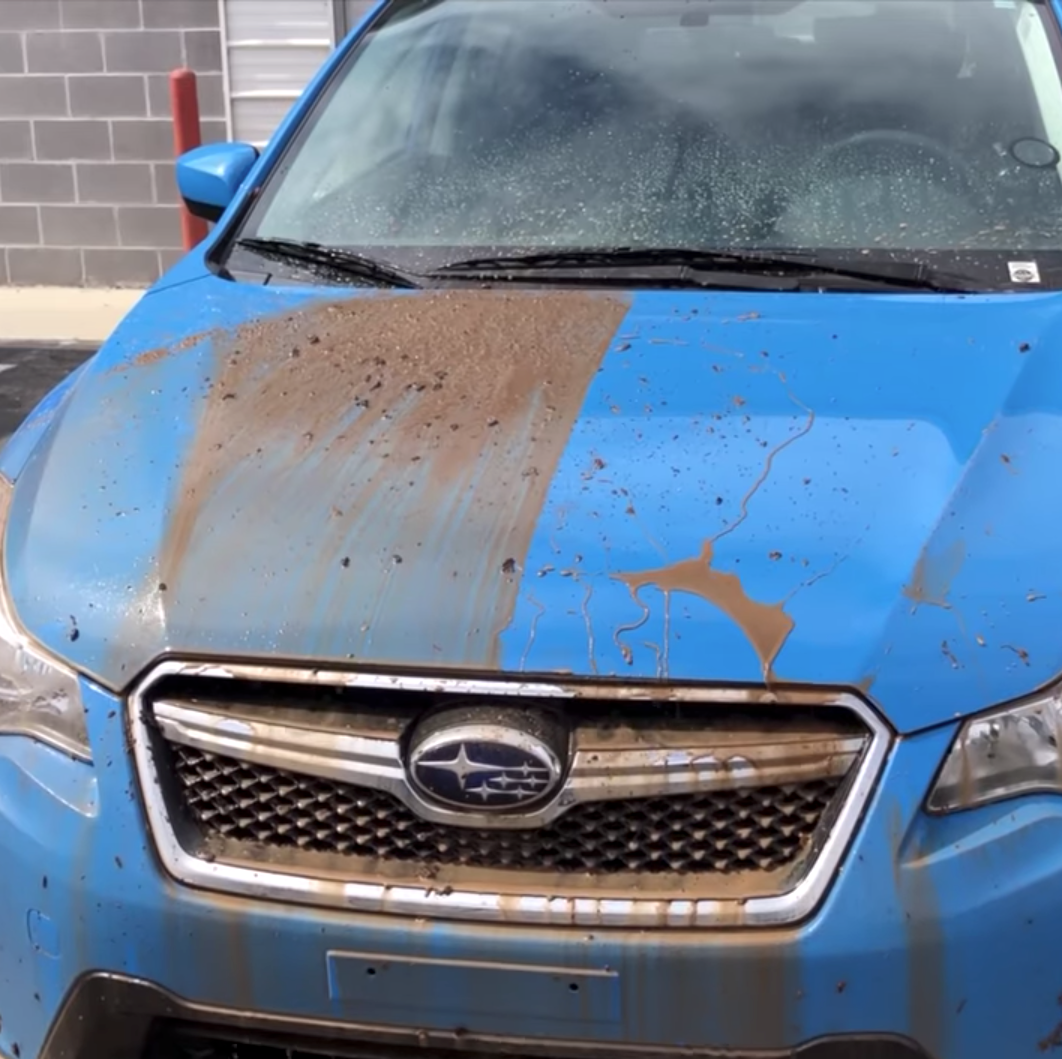A buyer’s guide to finding affordable Ceramic Coating Newark
Wiki Article
Discovering the Science Behind Car Ceramic Coating and Its Protective Residences
The science of car ceramic coating provides a remarkable study in innovative automobile security. Composed mostly of silicon dioxide and polymers, these layers form a robust bond with vehicle paint. This interaction enhances toughness versus ecological hazards while using hydrophobic advantages. Nonetheless, the details of how these coatings work and their long-lasting benefits continue to be much less comprehended. Unloading these details exposes why ceramic coverings are becoming a recommended option for lorry treatmentWhat Is Ceramic Coating?
Ceramic coating is a liquid polymer that chemically bonds to the surface of a lorry's paint. This innovative safety layer enhances longevity and offers superior resistance to ecological aspects. Unlike typical wax or sealants, which offer short-term protection, ceramic layers develop a resilient shield that can endure rough problems such as UV rays, acidic contaminants, and extreme weather condition. When applied correctly, the coating creates a hydrophobic surface, causing water to grain and slide off, which helps in preserving the lorry's tidiness. Furthermore, it provides enhanced gloss and deepness to the paint, making the vehicle show up even more refined and dynamic. The application process commonly includes detailed surface prep work, including cleaning and polishing, to assure peak bonding. As a result, ceramic coatings are ending up being increasingly popular among car lovers and those looking for to secure their financial investments, guaranteeing to maintain the vehicle's visual allure while lowering the frequency of maintenance.The Make-up of Ceramic Coatings
The complex solution of ceramic coverings largely consists of silicon dioxide (SiO2), which is stemmed from all-natural resources like quartz and sand. This essential element gives the foundation for the coating's resilience and safety top qualities. Along with SiO2, ceramic finishings usually include various polymers and ingredients that enhance attachment, versatility, and resistance to ecological aspects. These compounds function synergistically to create a durable barrier versus impurities such as dirt, chemicals, and UV rays.Furthermore, some solutions include titanium dioxide (TiO2) or other nanomaterials, which can enhance the coating's hydrophobic homes, causing better water repellency. The specific composition can vary significantly among makers, impacting efficiency and long life. Ultimately, the combination of these elements culminates in a protective layer that not only boosts the aesthetic appeal of cars however likewise serves to extend their life expectancy by shielding the surface area from potential damage.Exactly How Ceramic Coatings Job
Understanding just how ceramic layers function entails discovering their chemical structure, which adds to their protective qualities. The application procedure is important for accomplishing optimal results, while longevity and resilience elements determine the coating's effectiveness with time. Together, these elements highlight the advantages and performance of ceramic coatings for vehicle defense.Chemical Structure Explained
While many car proprietors seek lasting protection for their automobiles, the chemical make-up of ceramic coverings plays a critical duty in their effectiveness. These finishings mainly are composed of silicon dioxide (SiO2), which is stemmed from all-natural minerals. This substance develops a strong bond with the car's paint, developing a sturdy, safety layer. In addition, many ceramic layers have titanium dioxide (TiO2), enhancing their hydrophobic buildings and resistance to UV rays. The visibility of polysiloxanes can better enhance versatility and toughness. Together, these elements contribute to the coating's capability to ward off water, dust, and contaminants, while likewise offering a high-gloss surface. Comprehending this chemical foundation aids car proprietors value the robust defense used by ceramic coverings.Application Process Summary
Using ceramic coverings entails a careful procedure that assures ideal bonding and security for the car's surface. Initially, complete cleaning and decontamination of the car's outside are executed to remove dust, crud, and previous waxes. This step verifies that the surface is without impurities that could prevent bond. Following this, the paint is usually polished to improve quality and eliminate any type of flaws. As soon as prepared, the ceramic coating is used in tiny areas making use of an applicator pad, enabling consistent coverage. The coating is after that left to treat, creating a solid chemical bond with the surface. Correct treating times and problems are crucial, as they validate the coating accomplishes its optimum efficiency and protective top qualities.Longevity and Longevity Factors
Ceramic coverings are designed to supply resilient defense with their advanced chemical composition, which creates a robust obstacle against environmental pollutants. The i loved this durability of these coatings is influenced by variables such as the thickness of the application, the top quality of the product, and the conditions under which the automobile is revealed. High-quality ceramic coverings can last several years, resisting scratches, UV rays, and chemical spots. Proper upkeep, including normal cleaning and regular reapplication, can even more enhance long life. Additionally, environmental variables like climate and direct exposure to toxins can affect the life-span of the coating. Overall, when used and kept properly, ceramic finishings use phenomenal resilience, making them a prominent option for car lovers looking for to protect their car's look.Hydrophobic Characteristics and Water Repellency
Hydrophobic residential properties are a trademark of high quality car ceramic layers, substantially enhancing the lorry's surface performance. These coverings develop a molecular bond with the car's paint, leading to a surface area that drives away water successfully. When water comes right into contact with a ceramic-coated surface area, it grains up and rolls off, minimizing the quantity of liquid that continues to be on the paint. This behavior not only adds to a cosmetically pleasing appearance but additionally decreases the buildup of impurities such as dust, crud, and road salts.The boosted water repellency causes simpler cleaning and upkeep, as much less initiative is needed to eliminate unwanted materials. Additionally, the hydrophobic nature of ceramic coverings aids in avoiding water areas, which can mar the surface of uncoated surface areas. On the whole, the consolidation of hydrophobic residential or commercial properties in ceramic coverings plays a necessary duty in keeping the car's pristine go to my blog appearance while streamlining maintenance.Defense Against Scratches and UV Damages
Car ceramic coverings provide substantial protection versus scratches and UV damages. The scrape resistance mechanism creates a resilient layer that soaks up effects, while the UV securing advantages help preserve the car's paint stability in time. With each other, these features add to a longer-lasting and aesthetically appealing finish.Scrape Resistance Mechanism
Using advanced innovation, ceramic coverings offer a durable guard versus scratches and UV damage, improving the durability and appearance of lorry surfaces. The scratch resistance system of these layers is connected to their distinct molecular structure, which develops a durable bond with the automobile's paint. This bond produces a hard, protective layer that can absorb influences and stand up to abrasions. Furthermore, the smooth surface area of the coating minimizes friction, making it difficult for contaminants to stick and trigger scrapes. The chemical composition of ceramic coatings typically includes nanoparticles that reinforce the protective layer, additional improving its durability. Consequently, cars treated with ceramic layers display markedly improved scratch resistance contrasted to conventional wax or sealants, ensuring a pristine coating with time.UV Protecting Benefits
The protective high qualities of ceramic finishes expand beyond scrape resistance to include significant UV securing advantages. These coatings create a robust obstacle that reflects hazardous ultraviolet rays, safeguarding the automobile's paint my sources and underlying products. Long term exposure to UV radiation can lead to fading, oxidation, and degeneration of the paint finish. By incorporating ceramic finishings, vehicle proprietors can effectively alleviate these risks, preserving the visual allure and integrity of their autos. Furthermore, the UV blocking residential or commercial properties add to enhanced long life, decreasing the frequency of repainting and maintenance. Eventually, the assimilation of ceramic coverings supplies a complete option for shielding cars from the damaging effects of sunlight exposure, making sure a sustained, lively appearance over time.The Longevity and Upkeep of Ceramic Coatings

Often Asked Inquiries
Can Porcelain Coating Be Applied to Any Kind Of Kind Of Lorry?
Ceramic coating can be related to various types of lorries, consisting of vehicles, trucks, and motorcycles. Surface prep work and compatibility with particular materials are important for excellent adhesion and performance of the coating.Just How Much Does Ceramic Coating Commonly Cost?
Ceramic coating usually costs between $500 and $2,000, relying on variables such as lorry size, coating top quality, and professional application. The financial investment can offer long-lasting security and enhance the lorry's appearance over time.
Is Specialist Application Essential for Best Results?
The necessity of professional application usually relies on preferred results. Experts typically ensure correct surface prep work and application techniques, causing suitable bonding and durability of the coating, which might be challenging for inexperienced people to attain.Can Porcelain Coatings Be Eliminated or Repaired?
Ceramic coverings can be gotten rid of or repaired, though the process may call for certain solvents or methods - Ceramic Coating Newark. Appropriate elimination is vital to prevent damage to the underlying surface, highlighting the importance of specialist help for ideal resultsJust How Does Porcelain Coating Contrast to Traditional Wax?
The comparison between ceramic coating and typical wax discloses that ceramic coverings offer remarkable resilience, improved protection against ecological contaminants, and longer-lasting sparkle, while wax calls for more constant application and gives much less general resistance to damage.Report this wiki page